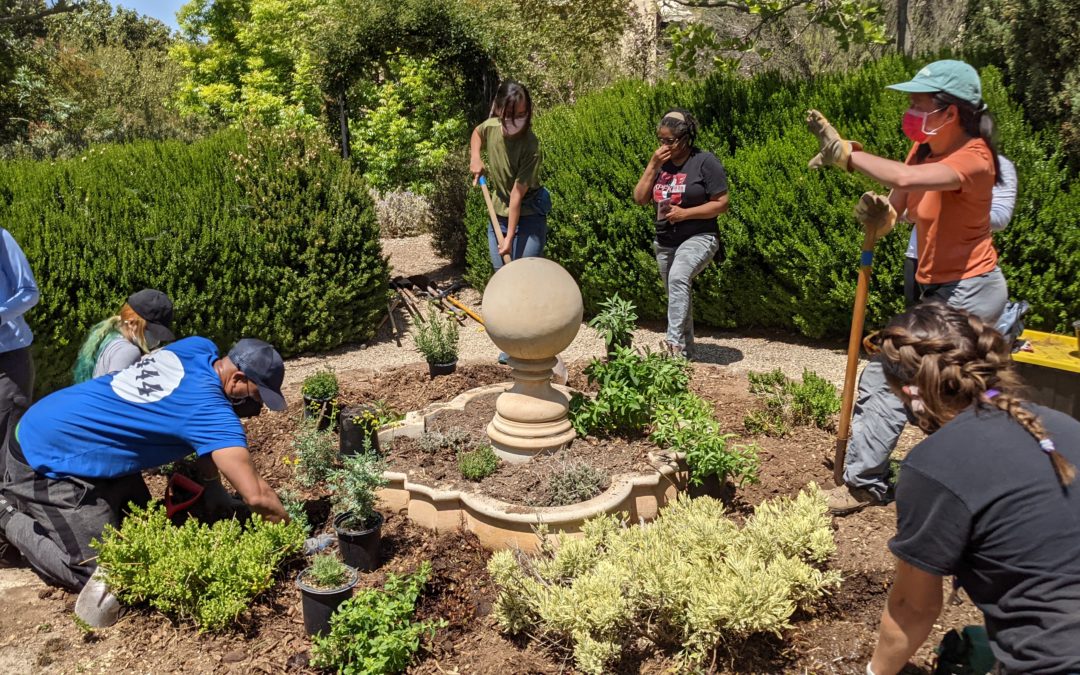Andrew Jewell, Communications and Volunteer Manager
It is now widely appreciated that the global climate is irreversibly changed and will continue to change in our lifetimes. The magnitude of the change depends on what human beings can accomplish in the years ahead. The recent IPCCC report shows an average temperature increase between 1.2 degrees C (the most optimistic model) and 3 degrees C (the least optimistic model in which carbon emissions double by mid-century) by 2040-2060. [1]
This means that, within the next 20-40 years, the global average surface temperature will increase by an appreciable amount even in the best case scenario. Even in the best case scenario — and, to be clear, this is not the scenario that current policies put us on track to face — many parts of the world will experience an increase in extreme heat events, flooding, and droughts. This is dangerous to both human beings and the diversity of life on this planet.
 The phrase “climate despair” has started to pop-up in headlines and on social media. Many people feel despair because the problem is outside individual control: the severity of these disasters, when considered on a global scale, depends on how much humans as a species can collectively accomplish. Understood this way, the struggle can make individual actions seem ineffectual: we know that taking personal responsibility to reduce our carbon footprint has a negligible impact on this global problem. [2]
The phrase “climate despair” has started to pop-up in headlines and on social media. Many people feel despair because the problem is outside individual control: the severity of these disasters, when considered on a global scale, depends on how much humans as a species can collectively accomplish. Understood this way, the struggle can make individual actions seem ineffectual: we know that taking personal responsibility to reduce our carbon footprint has a negligible impact on this global problem. [2]
What to do in the face of a looming disaster? As others have urged, we need to focus our efforts on collective action, systemic change, and lobbying governments. The negative impacts of climate change, however, are coming no matter what we do now. In fact, they are already here, in the form of lethal heat waves in Washington and record-breaking fires springing up overnight in the dry forests of Northern California. Sadly, this is old-news: we read about a new climate-related disaster every time we scroll through our news feeds. In contrast to the global problem of climate change, however, we can have a real and immediate impact at the local level by building resistance to climate-related threats.
Although I won’t talk about most of them, there are a multitude of ways to do this. We can, for instance, encourage shoreline retreat and rebuild wetlands as a bulwark against the rising sea, and we can harden homes against wildfires in wildfire-prone areas. Arlington Garden — as a climate appropriate, regenerative habitat garden — provides a useful model of how we can act locally to change our landscape to increase climate resilience and thereby help us protect what is important.
Urban Heat Island Effect
The urban heat island effect (UHI) is the name given to a relative increase in air temperatures of urban areas compared to rural areas. This increase can be surprisingly large, reaching maximum increases between 10.8F to 21.6F according to some studies. [3] As climate change increases background temperatures, some scientists believe that temperature extremes caused by the urban heat island effect will become more dangerous in urban areas. Urban “forests” like Arlington Garden serve an important role in reducing UHI and thereby helping to protect residents. [4]
Water Conservation
Similarly, Arlington Garden provides a model of drought-appropriate landscaping by using low-water mediterranean plants and utilizing rainwater capture. A recently commissioned estimate shows that the garden with its many trees and dense vegetation actually uses less than half the water (per acre) of an average home. Low-water gardening will become mandatory as droughts increase in Southern California, [5] and Arlington shows how this kind of gardening can be both beautiful and ecologically beneficial (see habitat creation below).
Habitat creation
Climate change is forecast to adversely affect existing habitats in Southern California and threaten many species with extinction. Arlington Garden shows one way that we can garden to support native species under pressure from habitat loss. For example, we host a diverse array of plants (such as the Coast Live Oak and numerous buckwheat species) that provide food and shelter for our native species. And we employ regenerative garden techniques which eschew herbicides, pesticides, or chemical fertilizers, because these can harm native species and upset the delicate balance of soil ecosystems.
Carbon sequestration
Finally — zooming out to a global scale again — urban forests like Arlington Garden sequester carbon from the atmosphere (read more about that from our volunteer William Hallstrom), and there is evidence that the regenerative techniques that we use allow more carbon to remain bound in the soil as compared to standard horticultural practices. Since atmospheric carbon in the form of carbon dioxide is the main contributor to climate change, the regenerative practices that allow us to grow a healthy habitat garden can (when scaled up as a new gardening ethos) also be part of the larger struggle against climate change.
Although the global struggle is largely not within local control, gardeners, landscape designers, artists, homeowners, and other community members can have an impact on the local effects of climate change through gardening. Such gardens — like Arlington Garden — are climate change gardens. Climate change gardens are popping up like wildflowers in neighborhoods and municipal landscaping across Los Angeles County, but the average green landscape is still a lawn or formal garden featuring tropical plants and maintained through chemical interventions.
Community gardens like Arlington Garden, which are free and accessible to the public, can serve an important role as hubs of community building around climate gardening. By fostering community and sharing knowledge and inspiration, we are better positioned to transform the urban landscape together.
- To learn more about regenerative habitat gardening and start gardening for climate change, you can attend our public programs or become a volunteer!
[1] The IPCCC report considers baseline to be the pre-industrial average from 1850-1900.
[2] I don’t mean to imply that residents of wealthy nations are thereby relieved of all personal responsibility to decrease their own greenhouse gas emissions: collective actions are built out of their many actors, so we each have a responsibility to the role we play, even if we don’t have a responsibility to do the impossible and individually make an appreciable impact on climate change. See here for some recent research on the most effective ways to reduce your personal carbon footprint.
[3] Edmondson, J., Stott, I., Davies, Z. et al. (2016) Soil surface temperatures reveal moderation of the urban heat island effect by trees and shrubs. Sci Rep 6, 33708. https://doi.org/10.1038/srep33708
[4] The Edmondson, Stott, et. al. study referenced above showed that urban trees and shrubs reduce average maximum summer soil temperatures below their canopies by between 3.9F and 10.2 F compared to herbaceous vegetation.
[5] An increase in droughts in Western North America is one of the predictions of the recent IPCC report.




Recent Comments